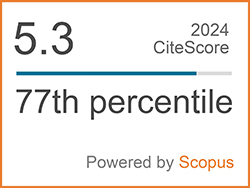Technical Effectiveness of ABS, Non-ABS and CBS in Step-through Motorcycles
Abstract
In Thailand, step-through motorcycles with engine sizes of 110 and 125 cc are very popular due to affordability and mobility. Fatalities of road accidents from such motorcycles are a very high proportion in comparison with other vehicles. Common accident scenarios from Thai motorcyclists are rear-ended and overtaking collisions. For these reasons, safety technologies in motorcycle brake systems are very significant to prevent road accidents for motorcyclists. However, there are various technologies that are affordable or available in the Thai market. Road safety assessment for motorcycles from the International Road Assessment Programme (IRAP) is also very poor in Thailand. To increase motorcyclists’ awareness of such safety technologies, the brake performance of ABS, Non-ABS, and CBS in step-through motorcycles were conducted with different protocols under controlled hand brake force in UN Regulation R78 and accident scenarios in Thailand. Consequently, the experimental results reveal that under the condition of the high friction surface, the braking distance of ABS motorcycle is up to 9.7% longer than those from the motorcycle with Non-ABS and CBS. Conversely, under the condition of the low friction surface, the braking distance of CBS motorcycle is up to 26.5% extension from those of the motorcycle.
Keywords
[1] Transport Statistic Subdivision. (2018). Statistic record of new motorcycle registration in Thailand 2018. Department of Land Transport, Bangkok, Thailand. [Online]. Available: https://web.dlt. go.th/statistics/
[2] World Health Organisation. (2015). Global Status Report on Road Safety 2015. WHO. Geneva, Switzerland. [Online]. Available: http://www.who. int/violence_injury_prevention/road_safety_ status/2015/en/
[3] World Health Organisation. (2018). Global Status Report on Road Safety 2018. WHO. Geneva, Switzerland. [Online]. Available: www.who.int/ violence_injury_prevention/road_safety_status/ 2018/en/
[4] D. Walton and J. Buchanan, “Motorcycle and scooter speeds approaching urban intersections,” Accident Analysis & Prevention, vol. 48, pp. 335– 340, Sep. 2012.
[5] M. A. Elliott, C. J. Baughan, J. Broughton, B. Chinn, G. B. Grayson, J. Knowles, L. R. Smith, and H. Simpson, “Motorcycle safety: A scoping study,” TRL Limited, Berkshire, England, TRL Report TRL581, 2003.
[6] M.-R. Lin and J. F. Kraus, “A review of risk factors and patterns of motorcycle injuries,” Accident Analysis & Prevention, vol. 41, pp. 710– 722, Jul. 2009.
[7] R. Limpert, “Motorcycle braking dynamics,” Accident Investigation Quarterly, vol. 18, pp. 15–20, Jul. 2008.
[8] M. Nakayama, K. Takenouchi, and K. Tani, “Braking device of motorcycle,” JP. Patent 2006 205802A, Aug. 10, 2006.
[9] E. Bakker, H. B. Pacejka, and L. Lidner, “A new tire model with an application in vehicle dynamics studies,” SAE International., PA, Tech. Pap. 890087, Apr. 1989.
[10] C.-K. Huang and M.-C. Shih, “Design of a hydraulic anti-lock braking system (ABS) for a motorcycle,” Journal of Mechanical Science and Technology, vol. 24, pp. 1141–1149, May. 2010.
[11] World Health Organisation. (2015). Decade of Action for Road Safety 2011-2020. WHO. Geneva, Switzerland. [Online]. Available: www. who.int/roadsafety/decade_of_action/plan/plan_ english.pdf?ua=1
[12] International Road Assessment Programme. (2015). iRAP Big Data Tool – Vaccines For Roads. iRAP. [Online]. Available: www.vaccinesforroads.org/ irap-big-data-tool/
[13] V. Kasantikul, Motorcycle Accident Causation and Identification of Countermeasures in Thailand Volume I: Bangkok Study. Bangkok, Thailand: Chulalongkorn University, Thailand, 2001.
[14] J. Carmai, S. Koetniyom, W. Sungduang, K. A. Kassim, and Y. Ahmad, “Motorcycle accident scenarios and post-crash kinematics of motorcyclists in Thailand,” Journal of the Society of Automotive Engineers Malaysia, vol. 2, pp. 231–244, Sep. 2008.
[15] Transport Statistic Subdivision. (2018). Statistics of motorcycle registration based on engine capacity size in year 2018. Planning Division, Department of Land Transport, Bangkok, Thailand. [Online]. Available: https://web.dlt.go.th/statistics
[16] S. Koetniyom, M. Dangchat, S. Mongkonlerdmanee, J. Carmai, and S. Chanta, “Identification of handbrake patterns of young motorcycle riders in thailand using a newly invented force measuring device,” Engineering Journal, vol. 22, pp. 185–197, Sep. 2018.
[17] D. Green, “A comparison of stopping distance performance for motorcycles equipped with ABS, CBS and conventional hydraulic brake systems,” in International Motorcycle Safety Conference, 2006, pp. 28–30.
[18] B. Hauser, H. F. Ohm, and G. Roll, “Motorcycle ABS using horizontal and vertical acceleration sensors,” U.S. Patent 5445443A, Aug. 29, 1995.
[19] C.-K. Chen, “Development of fuzzy controlled ABS systems for motorcycles,” International Journal of Vehicle Design, vol. 34, pp. 84–100, Jan. 2004.
[20] C.-K. Huang and M.-C. Shih, “Design of a hydraulic anti-lock braking system (ABS) for a motorcycle,” Journal of Mechanical Science and Technology, vol. 24, pp. 1141–1149, May. 2010.
[21] M. Nakayama, K. Takenouchi, and K. Tani, “Braking device of motorcycle,” JP. Patent 2006 205802A, Aug. 10, 2006.
[22] J. P. Pauwelussen. (2015). Chapter Two - Fundamentals of Tire Behavior. 1st ed. [Online]. Available: http://www.sciencedirect.com
[23] H. Pacejka. (2012). Tire and vehicle dynamics. 3rd ed. [Online]. Available: http://www.sciencedirect. com
[24] V. Cossalter, A. Doria, and R. Lot, “ Optimum suspension design for motorcycle braking,” Vehicle System Dynamics, vol. 34, pp. 175–198, Sep. 2000.
DOI: 10.14416/j.asep.2019.11.002
Refbacks
- There are currently no refbacks.
 Applied Science and Engineering Progress
Applied Science and Engineering Progress







